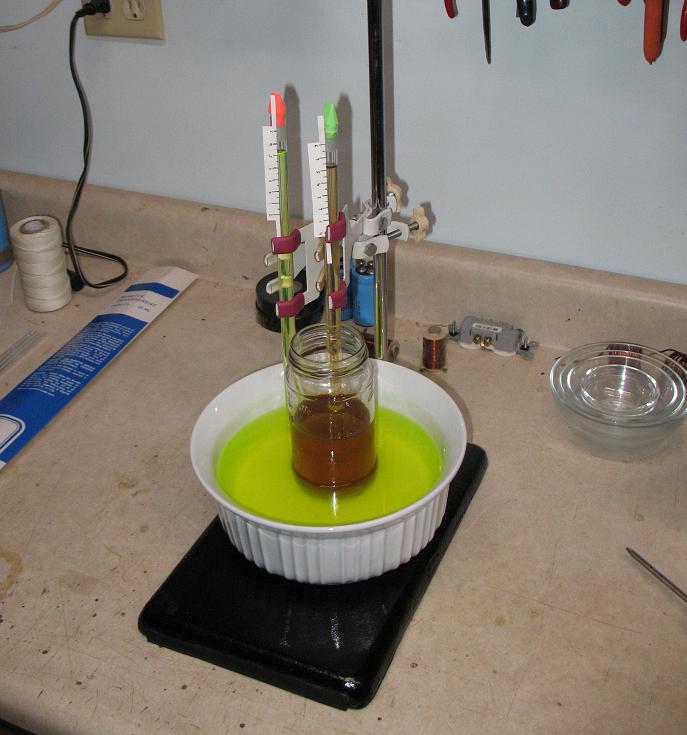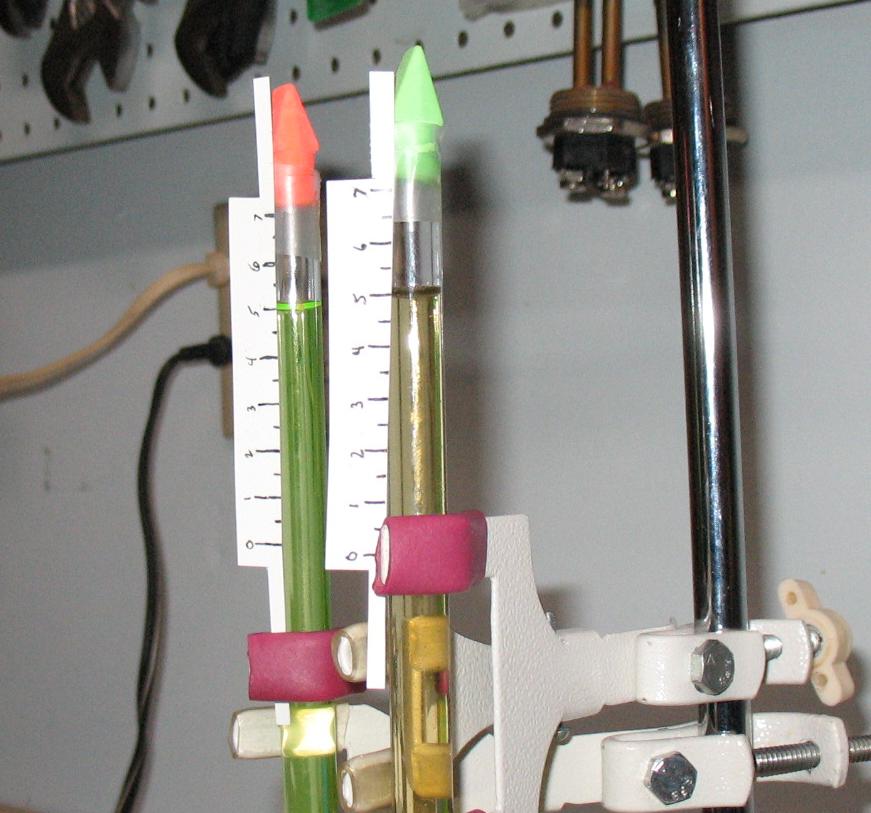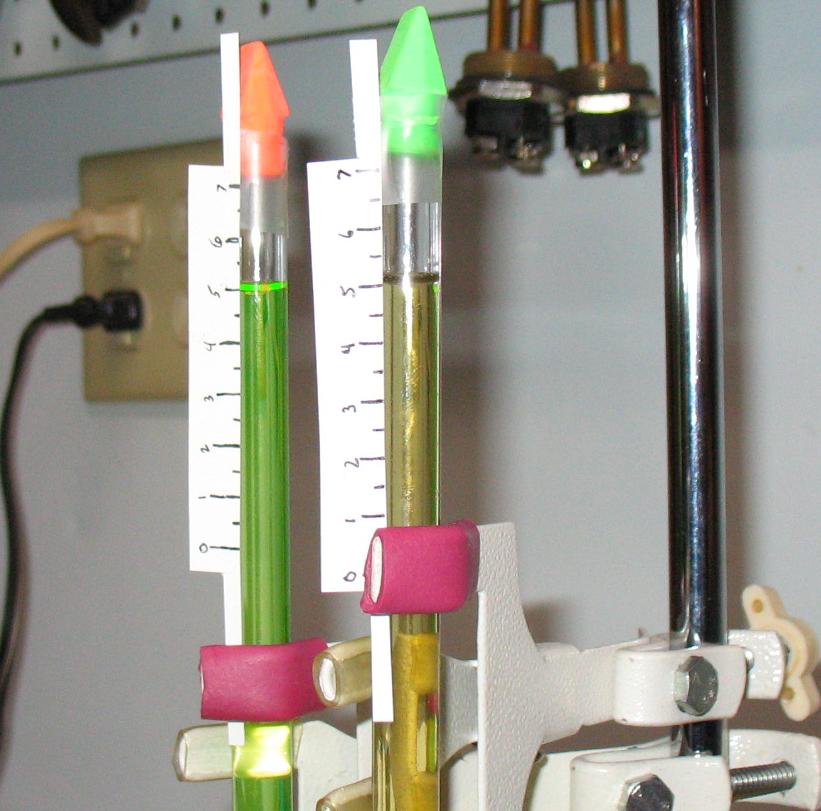Liquids And Torsion Fields
2 / 13 / 2011
An attempt was made to study the possibility of using a barometric
pressure setup to measure the torsion field charge state
of liquids that are used in the engine.
Seeking a meter to reflect the charge state of a Joe Cell fitted car.

The large container is filled with 50 percent water and Antifreeze.
The small container is filled with oil.
In the engine, the water jacket is found outside the oil channels for the most part.
Into each of the liquids is placed a glass tube filled with the same
liquids, then quickly overturned and inserted below the surface of
each, like a barometer.
A graduated cm card is taped to the side of each and the levels are set
to approximately the same heights by raising or lowering each of the
tubes.
The entire weight of the column of liquid in each tube now pulls
against an air vacuum at the top of each tube, indicating the relative
weight of the liquids.
I now added the two torsion wires to interact with the liquids with the
goal of making the oil expand and become light, and the Antifreeze
contract and become heavier.
This is the expected result of Joe Cell charging, which I am simulating
with resonant cut vibrational wires, coupling into each liquid by using
"distance tunning."
The wires are heavy #12, layed to the sides of the setup on the table
and slid to a position where the entire liquid vibrates up.
The presence of the field is then palmed around the containers, which
are circular, and when charged up form rings of Torsion around them.
A picture of the levels before using resonant rods to charge up the liquids.

Another picture during charging experiments shows the oil expanded more then the Antifreeze contracted.

Wires Applied to the Liquids
[1 gallon Prestone Antifreeze [ethylene glycol, diethylene glycol, sodium 2-ethyl hexanoat, and sodium neodecanoate]
50 /50 mix. with water]
Antifreeze Resonant Length - [Inflow]
14.87 - 88 mm resonance dip inwards to inflow pressure
1 quart NAPA Premium performance SAE 10W-40 Motor Oil
Oil Lengths
30.30 mm
12x = 36.36 cm
30.77 mm
12x = 36.924 cm
15.59 mm
12x = 18.708 cm
44.47 mm
12x = 53.364 cm
Conclusions
While the expected results were personally observed to be consistent
over a period of a couple weeks of monitoring and changing the charge
state of the liquids, the accuracy of the system is questionable for
quick metering.
The change in the oil was apparent as a notable rise in the level, the
Antifreeze was not so easy to tell, but after many trails I concluded
it was contracting about the width of the line of the ink on the card.
Sensing revealed, the Antifreeze coupled on the resonant length given
above, does feel very compressive as a strong holding field,
compressing inwards around the oil, which is known to expand.
The two effects together cause the oil pressure to rise in an engine, and avoid dropping with heat, as is the normal reaction.
Note 1
Barometric pressure was discovered to change the levels more then the
torsion fields did however, and as oil is lighter then water, the oil
tended to go higher then the antifreeze on occasion with weather
changes.
Care was taken to ensure that before each TF charging, the levels were again set up the same.
Torsion fields change the liquids rather fast when tunned correctly,
and the ring shaped field is easy to palm around the circular
containers.
Personally I do not consider this method of measuring TF charge to be
very useful. I was hoping for a more amplified shift of the levels.
Dave L
c_s_s_p group
Levitation Site